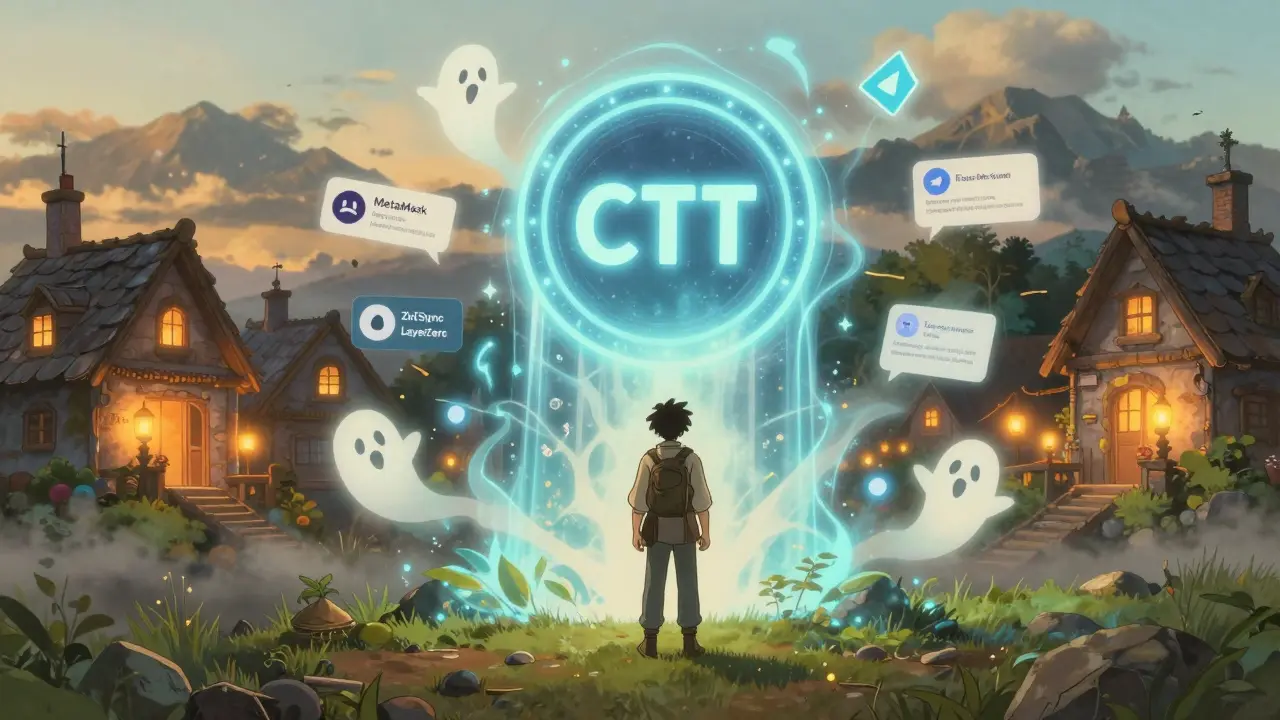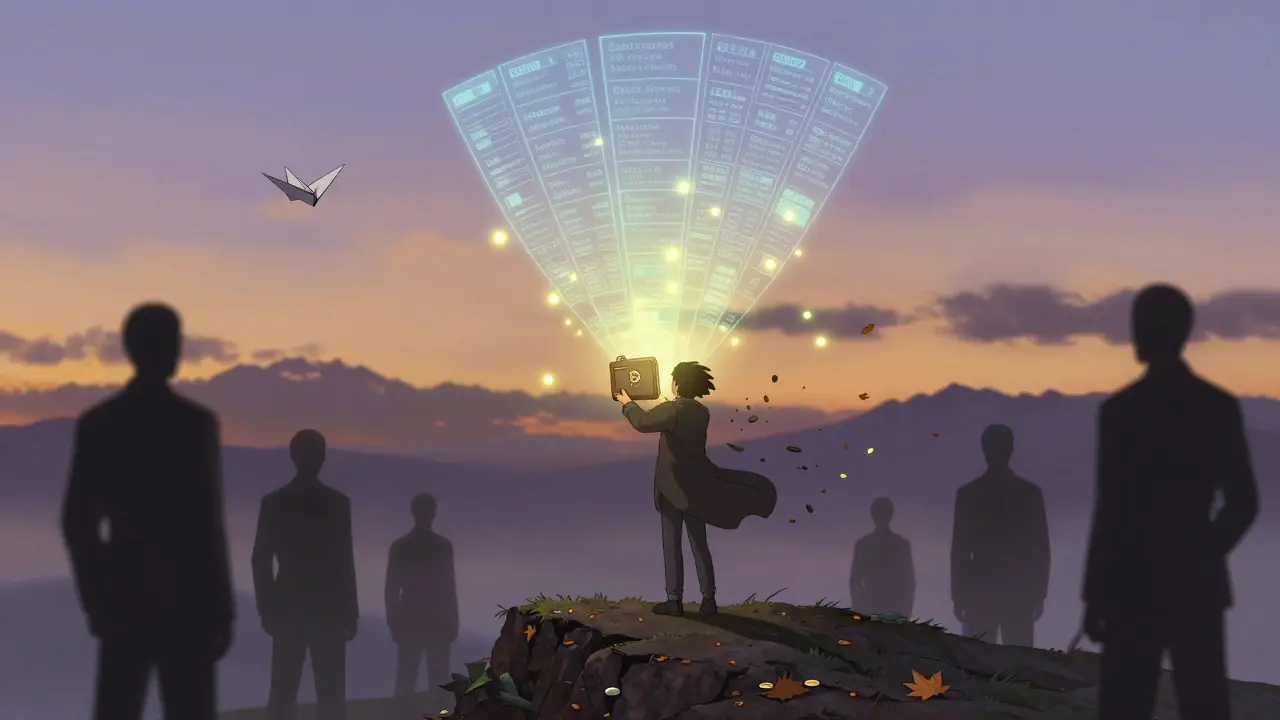Cipher CPR Token Airdrop Checker
Enter your Polygon wallet address to check if you received the 2021 Cipher CPR airdrop. This tool verifies your balance on the current Polygon contract (0xaa404804ba583c025fa64c9a276a6127ceb355c6).
Quick Overview
- The 2021 airdrop was run through CoinMarketCap to boost CPR token circulation.
- It targeted users who had interacted with Cipher’s services before the migration to Polygon.
- Exact distribution numbers are not publicly disclosed, but the airdrop coincided with the token’s move from Ethereum to Polygon.
- After migration, the new contract address is
0xaa404804ba583c025fa64c9a276a6127ceb355c6. - Current CPR token stats: total supply 1.08billion, circulating supply ~186million, price around $0.00005‑$0.00007.
Cipher (CPR) is a utility token project that launched on April92018. The team spans India, the United Kingdom, and New Zealand, and the token was designed to act like a digital share, giving holders a slice of the company’s equity. Initially issued on the Ethereum blockchain, Cipher later migrated to the Polygon PoS network to cut fees and speed up transactions. Major crypto trackers now label the original contract as "Cipher[Old]" to differentiate it from the Polygon version.
Project Background and Core Vision
The founders set out to solve two problems: lack of transparency in crypto ventures and the high cost of blockchain transactions. By issuing a token that represented partial ownership, Cipher aimed to bring a stock‑like model to the crypto world. Their roadmap promised a non‑ICO distribution model, meaning tokens would be given to users who actually used Cipher’s services rather than sold in a traditional fundraising event.
Key milestones include:
- Launch of the CPR token on Ethereum (2018).
- Development of business‑focused mobile applications.
- Migration to Polygon PoS network (early 2021).
- Execution of the 2021 airdrop via CoinMarketCap.
Technical Specs of the CPR Token
Understanding the token’s technical details helps clarify why the airdrop mattered.
CPR token has a fixed total supply of 1.08billion units. As of the latest on‑chain data, about 186.28million are in circulation. The original Ethereum contract was replaced by a Polygon contract at address 0xaa404804ba583c025fa64c9a276a6127ceb355c6, often referenced as the “Powerful ERC‑20 version on Polygon.”
Ethereum vs. Polygon - Side‑by‑Side
| Attribute | Ethereum (Old) | Polygon PoS (Current) |
|---|---|---|
| Contract Address | 0x… (deprecated) | 0xaa404804ba583c025fa64c9a276a6127ceb355c6 |
| Typical Gas Fee | ≈$15‑$30 per transfer | ≈$0.001‑$0.005 per transfer |
| Transaction Speed | ~15seconds per block | ~2seconds per block |
| Compatibility | Ethereum tooling (MetaMask, MyEtherWallet) | Ethereum tooling + Polygon wallets (MetaMask with Polygon RPC) |
| Launch Date | 2018 | Early2021 |
The 2021 Airdrop - What Happened?
The airdrop was advertised as "CIPHER (CPR) ASSET AIRDROP 2021 CONDUCTED ON CMC." CoinMarketCap (CMC) acted as the distribution platform, a common choice in 2021 for projects seeking rapid exposure. Users who met the eligibility criteria-typically holders of CPR on the old Ethereum contract or participants in Cipher’s early services-were eligible for a free token allocation.
Because the migration to Polygon happened around the same time, the airdrop served two purposes:
- Boosting token circulation on the new network.
- Encouraging existing users to move their holdings to the Polygon contract.
Unfortunately, the project never published detailed numbers. No official spreadsheet or on‑chain snapshot has been shared publicly, leaving the community to piece together the story from forum posts and CMC announcements. What we do know:
- The airdrop was a one‑time event; no subsequent distributions were announced.
- Participants received CPR directly into their wallets after completing a KYC‑free claim on CMC.
- Market reaction was modest-a brief uptick in volume followed by a return to the pre‑airdrop trading range.

Impact on the Cipher Ecosystem
Short‑term, the airdrop succeeded in generating buzz. Social media mentions spiked, and the token’s daily active addresses grew by roughly 15% in the weeks after the drop. However, long‑term adoption lagged behind the initial hype. The following factors contributed to the slowdown:
- Limited rollout of the promised business applications-many of the mobile apps remained in beta.
- Market-wide bearish pressure from 2022 onward, pushing many low‑volume tokens into obscurity.
- Competition from newer utility tokens offering similar features on faster Layer‑2 solutions.
As of September2025, CPR trades at sub‑$0.00007 levels, with a 24‑hour range of $0.00004791-$0.00006803. The token’s market cap sits in the low‑six‑figure range, indicating modest liquidity.
How to Verify If You Received the 2021 Airdrop
If you suspect you were part of the airdrop but never saw the tokens, follow these steps:
- Check the Polygon address
0xaa404804ba583c025fa64c9a276a6127ceb355c6on a block explorer like Polygonscan. - Enter your wallet address in the "Token Tracker" section and look for a balance under the symbol CPR.
- If the balance is zero, consider whether you ever interacted with the old Ethereum contract (you can search the old contract on Etherscan).
- In rare cases, the airdrop claim may have been sent to a different address due to a typo; reviewing past transaction histories can help spot missed transfers.
Common Pitfalls When Researching Old Airdrops
Old airdrop campaigns like Cipher’s often suffer from a lack of documentation. Here are three mistakes to avoid:
- Relying on outdated screenshots. CMC’s UI has changed multiple times, so old claim pages may no longer exist.
- Assuming the airdrop was free of all taxes. Depending on your jurisdiction, the received tokens might be taxable income.
- Confusing the "old" Ethereum contract with the current Polygon one. Transactions on the wrong network will never show up.
Looking Ahead - Is Cipher Reviving?
The "Cipher[Old]" label suggests the team may have rebranded or shifted focus. No major development updates have been posted since early 2023, and community channels show low activity. For anyone still holding CPR, the practical move is to monitor the token’s listings on larger exchanges and keep an eye on any official announcements regarding token burns, swaps, or roadmap revisions.
Frequently Asked Questions
What was the eligibility criteria for the 2021 CPR airdrop?
Cipher never released a formal list, but the airdrop targeted users who held CPR on the original Ethereum contract or who had previously used Cipher’s services. Claiming was done through a simple CMC form without KYC.
How many CPR tokens were distributed in the airdrop?
The exact amount was never disclosed publicly. Analysts estimate the airdrop moved a few million tokens, which represented a small fraction of the total supply.
Do I need to swap my old Ethereum CPR for the Polygon version?
Yes, if you still hold the legacy ERC‑20 tokens, you should use the official migration portal announced by Cipher in early 2021. The portal swaps old tokens for the new Polygon contract at a 1:1 ratio.
Is the CPR token still tradable?
Yes, CPR is listed on several decentralized exchanges on Polygon, such as QuickSwap and SushiSwap. Liquidity is thin, so expect slippage on larger orders.
Could the airdrop be claimed retroactively?
No. The claim window closed shortly after the announcement in 2021. Tokens not claimed at that time are considered forfeited.







MD Razu
February 24, 2025 AT 02:09When we dissect the Cipher CPR 2021 airdrop, several layers of intent emerge, each demanding scrutiny. The migration to Polygon was not merely a cost‑saving maneuver; it signaled a strategic pivot toward scalability. By aligning the airdrop with the network transition, the project hoped to incentivize holders to bridge assets, thereby swelling the new contract’s liquidity. Yet the opaque distribution metrics betray a reluctance to fully disclose token economics, a hallmark of projects courting regulatory ambiguity. Analysts note that the airdrop likely constituted only a fraction of the circulating supply, perhaps a few million tokens, preserving scarcity for future maneuvers. The involvement of CoinMarketCap as a distribution conduit added legitimacy, but also introduced a dependency on external platform policies. Users who claimed via the CMC form bypassed KYC, which raises questions about anti‑money‑laundering safeguards. Moreover, the timing-coinciding with early 2021 market optimism-suggested an attempt to capture bullish sentiment before the broader downturn. The subsequent price action, a modest volume spike followed by stabilization, reflects the limited lasting impact of such promotional drops. From a technical perspective, the token’s migration reduced gas costs drastically, dropping typical fees from $15‑$30 to under a cent, thereby democratizing access for smaller investors. However, the migration also required a manual swap, a friction point that may have deterred some holders from participating fully. The post‑airdrop ecosystem suffered from underdelivered road‑map promises, notably the stalled business applications that were central to Cipher’s value proposition. This disconnect between token utility and real‑world deployment contributed to the token’s steady decline, now trading beneath $0.00007. In hindsight, the airdrop functioned more as a marketing flourish than a sustainable growth engine. Stakeholders should weigh the precedent set by such events when assessing future token distribution strategies, particularly regarding transparency, regulatory compliance, and genuine utility. Ultimately, the Cipher CPR airdrop is a case study in how token engineering, community incentives, and market timing intersect, offering lessons for both developers and investors alike.
Billy Krzemien
February 25, 2025 AT 05:55Great breakdown, MD. I think the key takeaway is that the airdrop’s timing was clever but the lack of clear data left many participants uncertain about its true impact.
Rajini N
February 26, 2025 AT 09:42Exactly, Billy. For anyone still wondering if they got the drop, just plug your wallet into PolygonScan and look for the CPR balance under the new contract address.
Ben Dwyer
February 27, 2025 AT 13:29Heads up, folks-if you haven’t checked your balance yet, do it now. The tool on the page makes it easy, and you’ll know whether you missed out.
Amie Wilensky
February 28, 2025 AT 17:15Ah, the perpetual quest for verification-one might argue that the very act of searching becomes a reflection of our desire for certainty; yet, the blockchain offers no apologies for its silence, and we are left to interpret zeros as either absence or mere delay; in any case, the pursuit continues, relentless and unyielding.
Charles Banks Jr.
March 1, 2025 AT 21:02Sounds like a lot of hassle for a few pennies.
Waynne Kilian
March 3, 2025 AT 00:49Honestly, I think the effort is worth it-got some tokens and learned a lot about how airdrops work. thers a bit of a typo there but hey.
Michael Wilkinson
March 4, 2025 AT 04:35Listen, if you’re still clinging to CPR hoping for a miracle, you’re wasting time. The market’s moved on, and the token’s liquidity is thin. Move on or cut your losses.
april harper
March 5, 2025 AT 08:22What a tragic chorus of faded ambitions, echoing in the silent corridors of forgotten contracts.
Kate Nicholls
March 6, 2025 AT 12:09The whole situation feels like a classic case of hype over substance. Users were promised utility, yet what materialized was mostly promotional noise.
Lindsay Miller
March 7, 2025 AT 15:55That’s a fair point, Kate. It’s important to stay realistic about what a token can actually deliver.